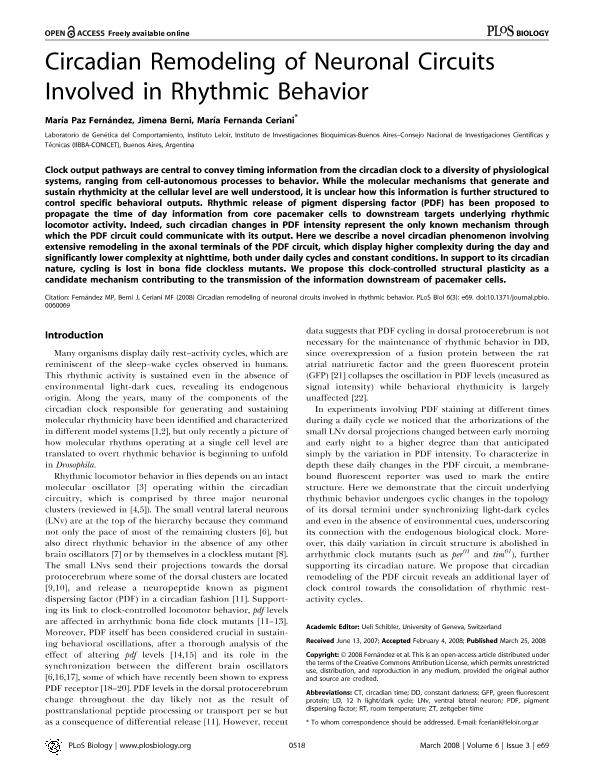Artículo
Circadian remodeling of neuronal circuits involved in rhythmic behavior
Fecha de publicación:
03/2008
Editorial:
Public Library of Science
Revista:
Plos Biology
ISSN:
1544-9173
e-ISSN:
1545-7885
Idioma:
Inglés
Tipo de recurso:
Artículo publicado
Clasificación temática:
Resumen
Clock output pathways are central to convey timing information from the circadian clock to a diversity of physiological systems, ranging from cell-autonomous processes to behavior. While the molecular mechanisms that generate and sustain rhythmicity at the cellular level are well understood, it is unclear how this information is further structured to control specific behavioral outputs. Rhythmic release of pigment dispersing factor (PDF) has been proposed to propagate the time of day information from core pacemaker cells to downstream targets underlying rhythmic locomotor activity. Indeed, such circadian changes in PDF intensity represent the only known mechanism through which the PDF circuit could communicate with its output. Here we describe a novel circadian phenomenon involving extensive remodeling in the axonal terminals of the PDF circuit, which display higher complexity during the day and significantly lower complexity at nighttime, both under daily cycles and constant conditions. In support to its circadian nature, cycling is lost in bona fide clockless mutants. We propose this clock-controlled structural plasticity as a candidate mechanism contributing to the transmission of the information downstream of pacemaker cells
Palabras clave:
Circadian Rhythm
,
Neuronal Circuits
,
Rhythmic Behavior
Archivos asociados
Licencia
Identificadores
Colecciones
Articulos(IIBBA)
Articulos de INST.DE INVEST.BIOQUIMICAS DE BS.AS(I)
Articulos de INST.DE INVEST.BIOQUIMICAS DE BS.AS(I)
Citación
Fernandez, Maria de la Paz; Berni, Jimena; Ceriani, Maria Fernanda; Circadian remodeling of neuronal circuits involved in rhythmic behavior; Public Library of Science; Plos Biology; 6; 3; 3-2008; 518-524
Compartir
Altmétricas




